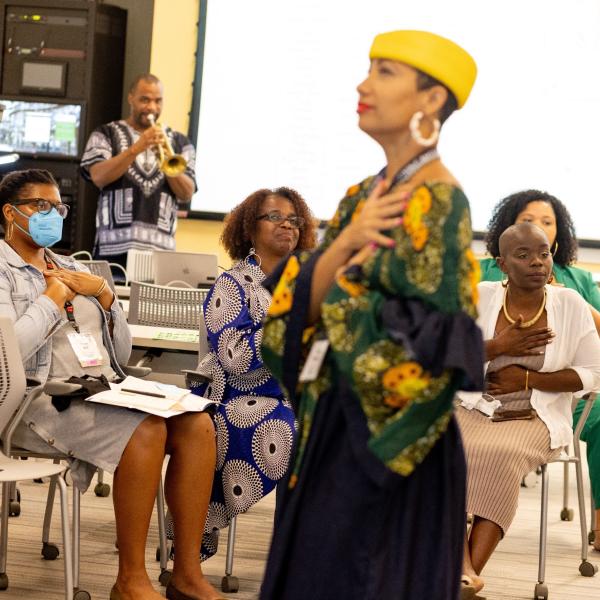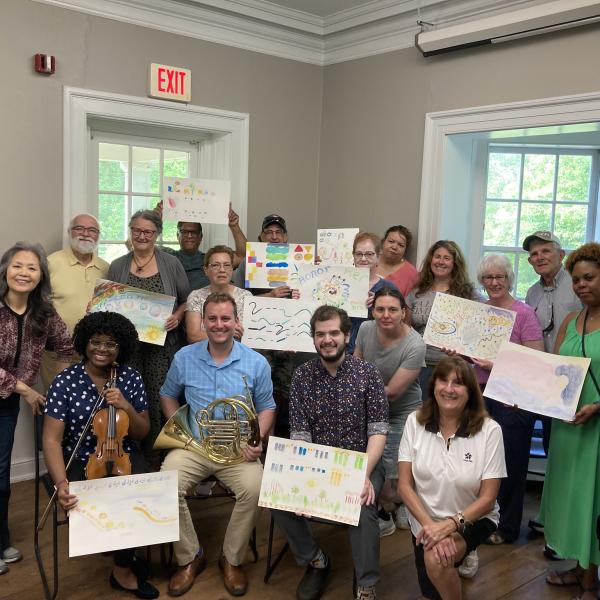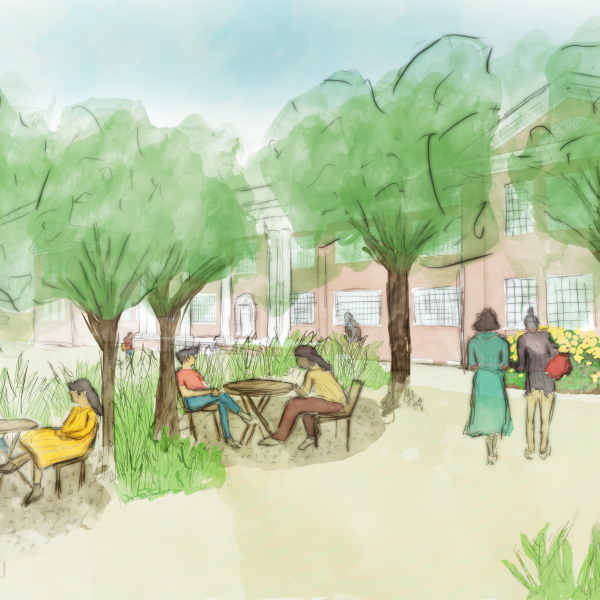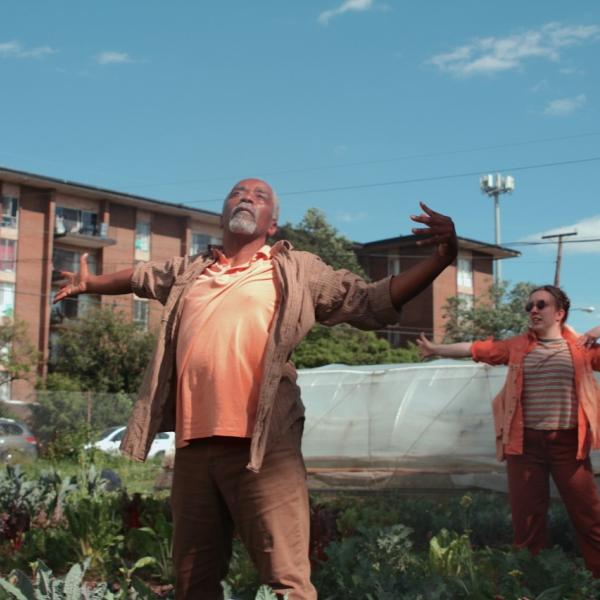Lifting the Curtain on Building Health
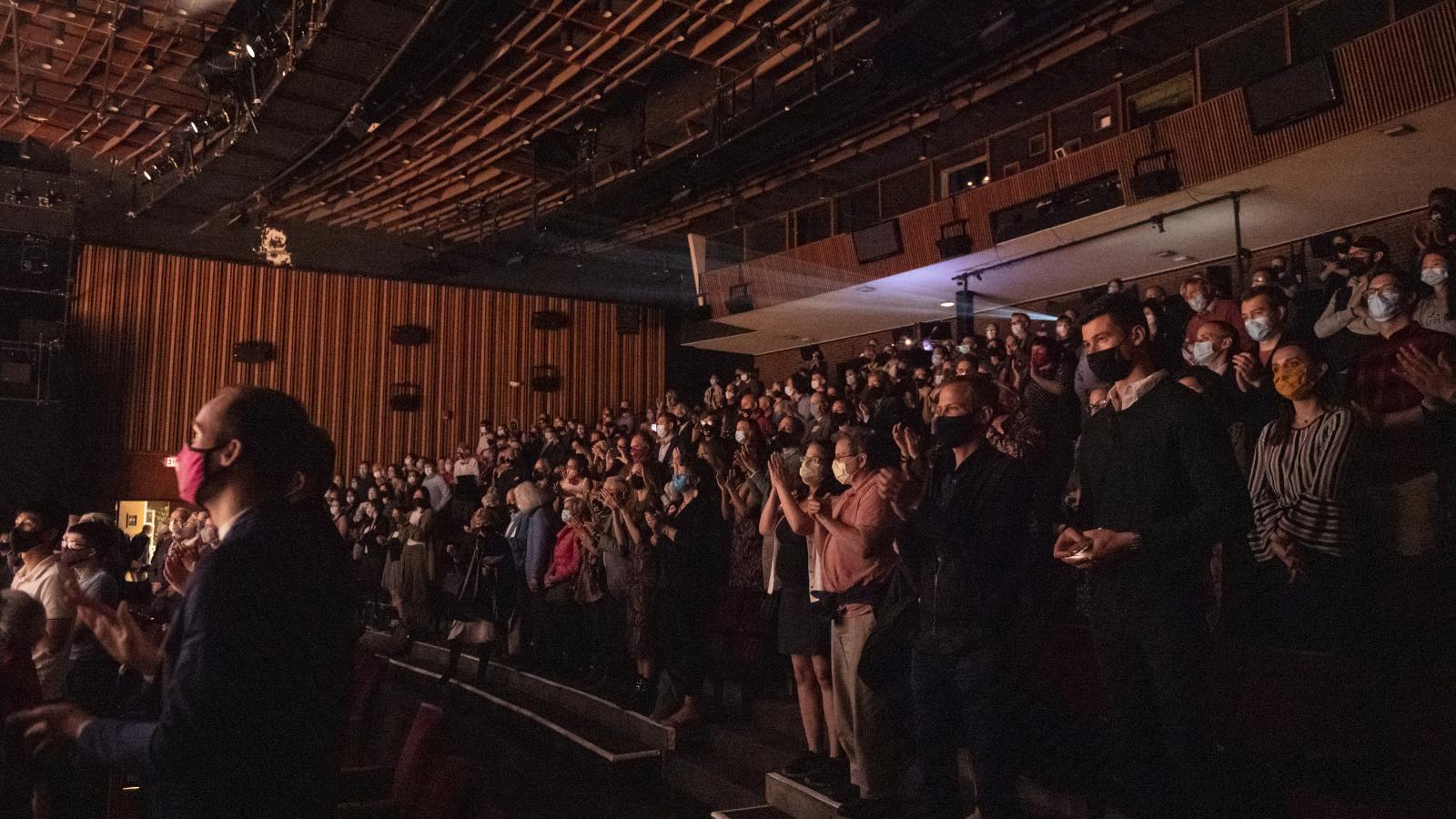
Audience at American Repertory Theater at Harvard University. Photo by Liza Voll
Less than three months after performing arts venues across the country began closing their doors in response to the COVID national emergency, Harvard University’s American Repertory Theater (A.R.T.) and the Healthy Buildings Program at the Harvard T.H. Chan School of Public Health released Roadmap for Recovery and Resilience in Theater, an online guide that uses public health principles to inform theaters of best practices to keep staff and audiences safe, evolving as the science around COVID advances.
The project was spearheaded by A.R.T.’s artistic director Diane Paulus and Joseph Allen, director of the Healthy Buildings Program and associate professor at the Harvard T.H. Chan School of Public Health. Allen’s academic background is in exposure and risk science, and his research is focused on how indoor air quality affects health—expertise that was highly sought after during the pandemic. Allen served as commissioner of the Lancet COVID-19 Commission, an interdisciplinary initiative convened to provide recommendations and address crises that arose from the pandemic, and has written opinion pieces for the Washington Post, New York Times, and USA Today, providing insight on how best to combat the spread of COVID. Allen spoke with the National Endowment for the Arts about creating the roadmap with A.R.T. and how performing artists and theaters are uniquely positioned to advocate for public health interventions.
“I'm a fan of performing arts, have been my entire life, and I love the work of the American Repertory Theater,” said Allen. “Maybe a year or so before the pandemic, I started working with Diane Paulus, who directs A.R.T., on their new theater that was being built on the Harvard campus.”
They sought input from professors and community members on its design. "We had a great discussion with the architects, the engineers, and the artistic team about this new building and started to talk about not only energy-efficient buildings, but also healthy buildings," Allen said. As COVID began to sweep across the globe, Allen turned his attention to the issue of airborne transmission of the virus. "Once you accept that [COVID spreads through the air], then you know how you manage the building is going to have a major impact, specifically around ventilation and filtration," he explained. "If you take some basic control measures, we can keep people safe in any environment.”
Paulus and Allen recognized that the performing arts faced unique challenges during the pandemic, as theaters were forced to shut down. They also understood that their combined knowledge could help keep people safe indoors, even in theaters. “We decided to take the meetings we were having at A.R.T. with their staff, what we were going to do in their theater, and turn it into a larger project to share this information of how we were thinking about recovery and resilience in theaters,” Allen said. “We wanted to bring some of this science forward, recognizing [that] we have an obligation. We are a university that had a school of public health and a world-class theater—there aren't that many of them.”

Adi Dixit, Rowan Magee, Celia Mei Rubin, and Nikki Calonge in Life of Pi at A.R.T. Photo by Matthew Murphy and Evan Zimmerman for Murphy Made
The response to the roadmap was in Allen’s words, “terrific.” “The feedback I got was that it was a helpful resource and helpful to have somewhere to turn [in a confusing time]. Our goal was to make it really actionable and solutions-oriented, such that any building anywhere could have been a space where you could congregate and keep risk low," Allen stated.
Making improvements to building health does not have to be complex or expensive. In fact, Allen pointed out that the Lancet COVID-19 Commission’s report, The First Four Healthy Building Strategies Every Building Should Pursue to Reduce Risk from COVID-19, emphasized four essential strategies: getting building tune-ups, bringing in outdoor air, upgrading filters, and deploying portable air cleaners. “Health isn't just absence of disease or avoidance of disease,” Allen noted. “There are the pro-health benefits like feeling good and overall well-being and being able to perform optimally, and indoor air quality influences those aspects of health too.”
While theaters pay attention to air quality, with a focus on thermal comfort, Allen believes it's time to broaden the perspective, such as, “How do we improve air quality beyond making sure it's comfortable from a temperature perspective? Then we can think about water quality, and we should think about the materials we use. A lot of the products we put in buildings have toxic chemicals that interfere with hormone systems. COVID has opened up the door to a wider conversation on what else matters in the building related to health,” he said. The project’s healthy building strategies extend beyond COVID mitigation. By improving air quality throughout an entire theater, the risk is lowered for COVID, influenza, and other respiratory illnesses. “The beauty of your building, the inspiration, the awe, the acoustics, the lighting, clearly theaters think about all that, but there are these other aspects of how they actually influence health beyond the performance, including the spaces the public doesn't see. It's not just the auditorium,” he said.
Artists occupy a powerful place in shaping society's perception and decisions. "The wider role artists play in society are messaging and standard setting. Others are listening and paying attention. Artists are inspiring and bringing their message beyond what happens in the theater itself," said Allen. “Theaters are a highly visible community, and that pushes society forward both in terms of the art, but also decisions about how they operate.”
The healthy building movement is gaining momentum, and Allen believes that it is one of the greatest public health opportunities that our society can benefit from. The future of theaters is not only about the performances but also about the health and well-being of those who enter their doors. Reflecting on the path forward, Allen said, "We need to start thinking of our buildings as a public health intervention tool, and the goals and mission of theater and performing arts are aligned with the goals of public health.”



